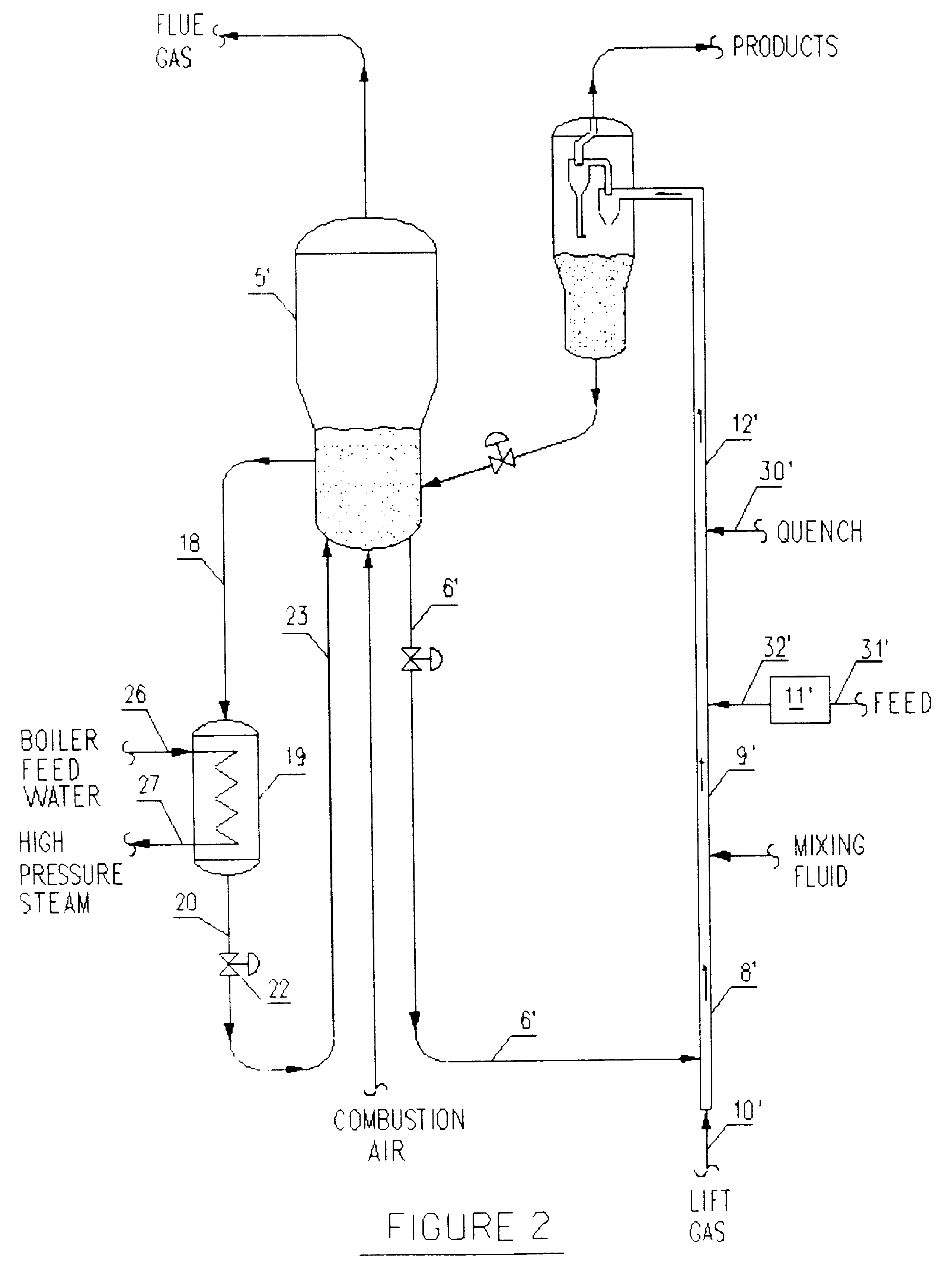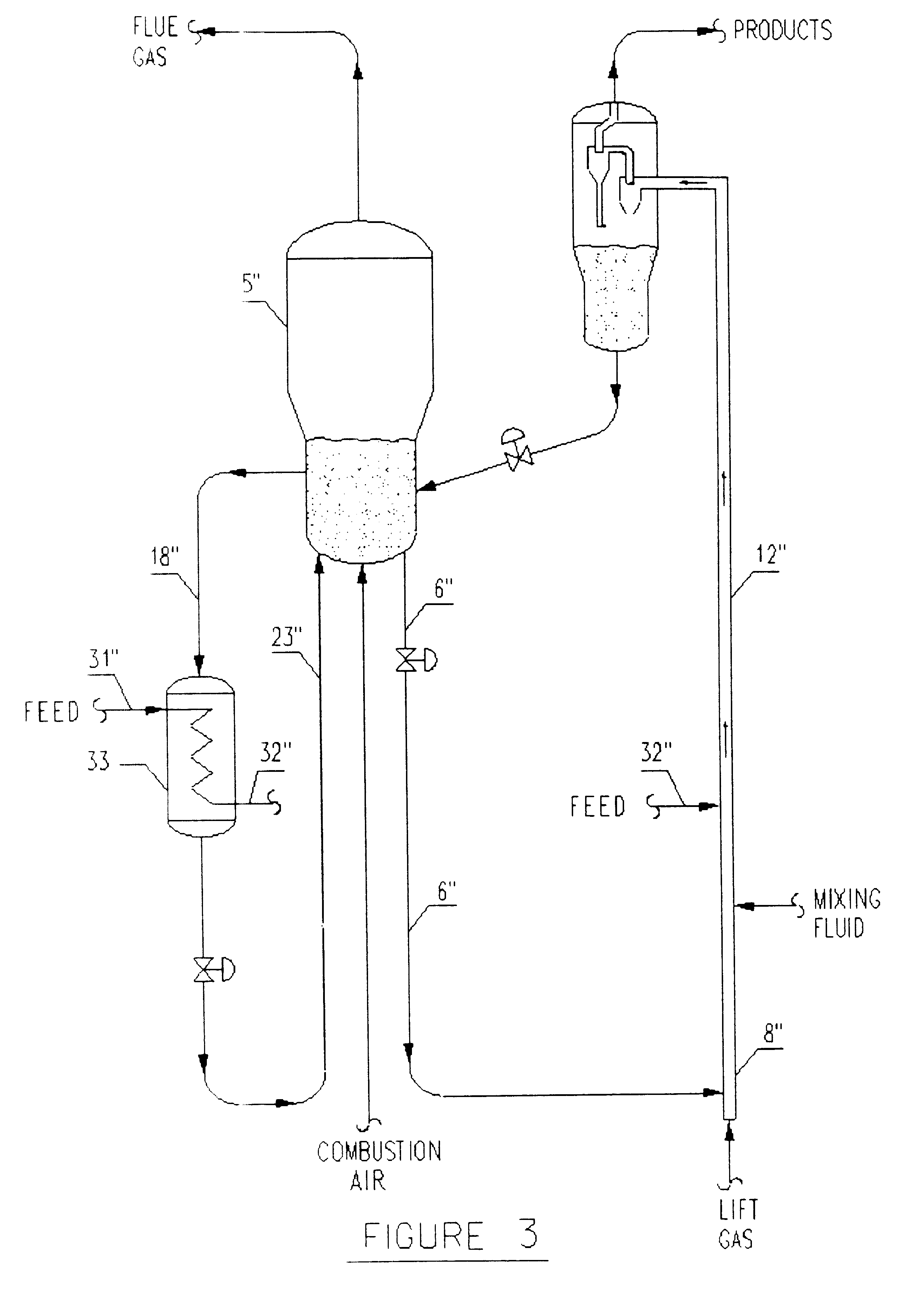Process for the fluid catalytic cracking with pre-vaporized feed
a fluid catalytic and prevaporized feed technology, applied in catalytic naphtha reforming, catalytic cracking, naphtha reforming, etc., can solve the problems of catalyst cracking activity loss, increase in the final reaction temperature, increase in the destruction ability of vanadium, etc., to reduce the catalyst/oil ratio, reduce contact time, increase the final reaction temperature
- Summary
- Abstract
- Description
- Claims
- Application Information
AI Technical Summary
Benefits of technology
Problems solved by technology
Method used
Image
Examples
Embodiment Construction
The hydrocarbon feed having the properties listed in Table 1 was used in this Example, which illustrates one of the preferred modes of the invention, that is, the utilization of an infrared furnace as the source of energy for the pre-vaporization of the feed to a pilot FCC unit.
The infrared furnace used in this Example for the pre-vaporization of the feed is provided with four 1000 W lamps, the total being 4000 W. This furnace allows the homogenous application of this high power to a relatively short portion of 26 cm length. This minimizes the residence time of the feed in the furnace, so as to avoid the formation of hot spots throughout the heating, these hot spots being usual when electrical resistances are employed.
FIG. 5 shows the arrangement of the pilot FCC unit coupled to the infrared furnace. The stream of cold feed (40) was introduced in the unit together with a stream of inerts (44), added at the furnace entrance aiming at reducing the residence time of the feed. The feed ...
PUM
| Property | Measurement | Unit |
|---|---|---|
| temperature | aaaaa | aaaaa |
| boiling point | aaaaa | aaaaa |
| temperature | aaaaa | aaaaa |
Abstract
Description
Claims
Application Information
 Login to View More
Login to View More - R&D
- Intellectual Property
- Life Sciences
- Materials
- Tech Scout
- Unparalleled Data Quality
- Higher Quality Content
- 60% Fewer Hallucinations
Browse by: Latest US Patents, China's latest patents, Technical Efficacy Thesaurus, Application Domain, Technology Topic, Popular Technical Reports.
© 2025 PatSnap. All rights reserved.Legal|Privacy policy|Modern Slavery Act Transparency Statement|Sitemap|About US| Contact US: help@patsnap.com



